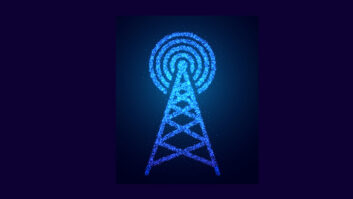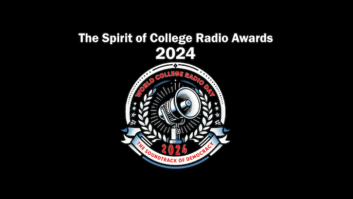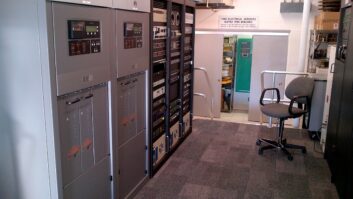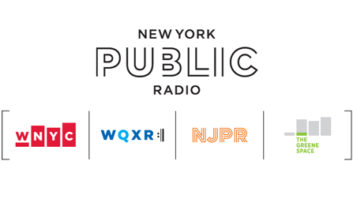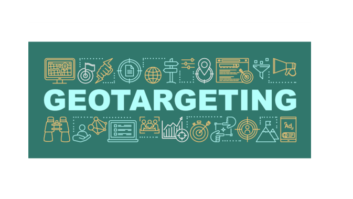Text has been updated to clarify that the FCC applications described below are to build new boosters, a first step in the process. An applicant for geotargeting must apply separately for the actual experimental authorization to originate programming.
The FCC’s decision to allow program origination on FM boosters for a few minutes of geo-targeting every hour could have a significant impact on programming and sales strategies for some broadcasters, according to industry watchers.
The commission has yet to develop the final rules, but for now broadcasters can deploy the strategy under one-year, renewable experimental authorizations. A station that does not already have a suitable booster must also apply to build one first.
The technology’s proponent, GeoBroadcast Solutions, says FM stations can use its ZoneCasting system to deliver highly targeted news, weather, traffic, advertising and public service information.
In June, GBS announced that several broadcasters had filed applications to build new boosters and plan to request experimental authorization once built.
WRBJ-FM in Jackson, Miss., is an urban format station owned by Roberts Broadcasting that participated in testing the technology. “The station will utilize ZoneCasting to offer affordable advertising rates to smaller, minority-owned businesses and provide targeted content for Jackson State University,” GBS wrote.
KLCY(FM) in Vernal, Utah, a country station owned by Ashley Communications, will use ZoneCasting to deliver content specific to a large Ute Indian Tribe reservation, “supported by strong community interest and funding from Ute leadership.”
KADD(FM) in Las Vegas is operated by Radio Activo. It will target high-density Hispanic areas in Las Vegas and Washington County, Utah.
KKFT(FM) and KRFN(FM) in Reno, Nev., owned by Evans Broadcast, “will create targeted content zones for Carson City and Lake Tahoe, focusing on the distinct needs of Nevada’s capital and the vacation destination community.”
Soon after, GBS announced that Bustos Media Holdings also had applied for new boosters, for two FM stations in Seattle. The company said this was notable because of the size of the market, No. 12 in the Nielsen Audio rankings by population.

“Hyper-local”
Comments filed earlier in the FCC’s proceedings provide insight into how other broadcasters may use the technology.
Core Radio Group operates urban format stations in several markets, including the “Streetz” brand in Atlanta. It told the FCC it could better serve black communities through weather, traffic and civic information if it used the system.
“Geotargeting would also enable hyper-local advertising over the FM radio band … for black entrepreneurs running small businesses that want to reach listeners who may be geographically clustered inside a much broader FM radio market. Geotargeting enables the radio station to serve those listeners at an affordable price for the advertiser,” Core wrote.
The company said that “every other communications platform” other than radio “can and does geo-target.”
Core Radio Group didn’t return an email seeking comment on its plans to implement geotargeting.
Steve Anderson, general manager of KAFF(FM) in Flagstaff, Ariz., hopes his station can someday use geotargeting booster technology to target the Native American population in its listening areas.
Flagstaff has a population of around 79,000, and Native Americans are the second-largest demographic, according to KAFF. That includes members of the Navajo, Apache, Yavapai and Hopi tribes.
Even though KAFF has “no active plans” to deploy the technology, Anderson believes the ability to geo-target content will prove to be an important asset for broadcasters.
“Geotargeting is a very successful way to market digitally, so we believe the same benefit could be achieved with terrestrial radio. We are currently gathering more knowledge about the technology and the affect the boosters may have on everyday listening in our market. If it allows for a seamless listening experience, we may have something here,” Anderson said.
“We believe we could fill in holes where our signal is not as strong with the boosters and that would also include the Navajo Indian Reservation. With the geotargeting nature of the technology we can also tailor specific client and station messages to each area.”
Among the organizations expressing concern about geotargeting to the FCC was the New Jersey Broadcasters Association. It told the commission in its comments that it fears that small New Jersey stations, pinched between the major out-of-state markets New York City and Philadelphia, could be at a competitive disadvantage.
“Geotargeting would allow New York’s, as well as other metros like Philadelphia and Allentown, etc., Class B radio stations that broadcast signals over wide swaths of the Garden State’s geography … to sell locally targeted advertising in markets while denying the Class A stations in those markets to reciprocate in New York or other such cities,” NJBA told the FCC.
The NJBA has said it believes this type of “wild west” entry into neighborhoods is a threat to the majority of New Jersey’s lower-powered, fully licensed stations.
Some large broadcasters, including iHeartMedia and Audacy, also challenged the technical soundness of the technology in their prior comments. Both companies declined to comment when asked if they have any plans to explore geotargeting.
On the margins
The FCC will allow stations to apply for up to 25 boosters, though most deployments are expected to involve far fewer.
Bert Goldman, chief engineering consultant to GBS, said, “For instance, to cover the community of Lake Tahoe, KKFT will use one “border” node consisting of two licensed boosters, one of which will be designated as a Program Origination Booster. This is a good example since the South Lake Tahoe community, which is mostly in California, is very different from the Reno, Nevada community.
“Similarly, KADD, which currently has limited coverage in St. George, Utah, and primarily serves Las Vegas, will now have great coverage to more than 100,000 people in St. George with only one border node and two booster nodes.”
Francois Gauthier, president and principal engineer of Octave Communications, expects stations with marginal reception in downtown metropolitan areas might have the most to gain from geotargeting.
“Early deployment has demonstrated a direct correlation with their PPM decoding in those markets, thus driving the revenues directly. Early adopters will be winners in this scenario as once this fact will be known, many will do the same deployment,” he said.
A filing from Alpha Media estimated that a broadcaster operating four boosters would incur initial costs of about $51,000 and annual costs of about $59,000, which Alpha thought would be beyond the reach of small and midsized stations.
But Goldman said that the costs are coming down quickly. “Prices for low-power transmitters like we use for boosters (typically 1 kW or less) have dropped significantly, especially for analog, in the last year. Additionally, Geo is looking at a revenue share business model that could reduce costs to the station significantly, and in some locations where multiple stations can collocate, costs can be further reduced.”
Tim Anderson, principal engineer at TBA Communications, believes broadcasters will be eager to move forward. “I expect we will see many of the proponent broadcasters deploy zone boosters where there are specific market opportunities,” he said.
“If the early adopters prove workable business models that justify the investment while allaying interference concerns, when the commission releases its final rules, I foresee many more broadcasters adopting the technology.”
LPFMs, Class A and Class B1 facilities will have limited geo-targeting opportunities due to their smaller coverage areas, Anderson said. “For full Class Bs and the Cs, the opportunities grow exponentially with their larger coverage areas with potentially dozens of hyperlocal markets.”
More Tech Details
Bert Goldman, chief engineering consultant for GeoBroadcast Solutions, answered questions from Radio World about ZoneCasting and the technical design of the system.

Radio World: What might the upper end for the number of boosters per station be?
Bert Goldman: A zone typically comprises several boosters. To design a zone, one usually has a “border” node as one enters the zone, a couple of boosters within the zone, and another border node as one leaves the zoned area.
There are two licensed boosters to comprise a single border node: one booster that always mirrors the main programming and the other pointing 180 degrees in the opposite direction of the first that carries the zone programming during the three minutes an hour of split programming.
So in the example above, one would have two border nodes and two booster nodes, for a total of six licensed boosters.
If there were multiple roads or entry points into a zone, additional border nodes might be required, so perhaps eight licensed boosters to define a zone wouldn’t be unheard of. And given some challenging terrains or in the case of a Class C station where one wanted more than one zone, the number could approach 25.
RW: That seems like a lot and makes it easier to understand why NAB and others are worried about interference.
Goldman: The point is that proper design with an adequate number of boosters ensures that there is no interference. This is worth emphasizing since some casual readers don’t grasp it. A broadcaster wants to use the right number of boosters — no more and no less — to give the audience the best listening experience.
Within the zone, one must include an adequate number of nodes to make sure that the D/U or desired-to-undesired ratio overcomes the main signal within the zone, and several border nodes may be necessary to ensure a crisp transition between the main and geotargeted areas.
Keep in mind that this is all taking place inside the protected contour of the primary station, so there’s no potential for interference with other broadcasters. It’s clearly in the licensee’s best interest to minimize interference, and sometimes the best way to do this is by increasing the number of booster nodes to accomplish that.
It may be an unusual circumstance, but as I noted above, if there were a Class C station serving a large area that had an interest in multiple zones to serve a diverse population, I can easily see that they could approach 25 separately licensed boosters, but every situation is different.
RW: What are the challenges of running and managing such a system?
Goldman: From an operational standpoint, operating a ZoneCasting system is not much different from operating a MaxxCasting system or any synchronized booster, or for that matter any RF transmission system. Once set up properly with quality equipment, the system is quite stable and reliable.
We’ve found that the biggest challenge tends to be IP connectivity. All of our systems are designed to immediately shut off if there is any loss of connectivity or synchronization. We’ve found that having multiple IP circuits with stream splicing reduces that issue effectively to zero.
[Read more of Radio World’s extensive geo-targeting coverage here]
